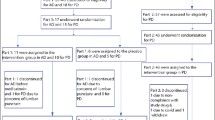Objective. To optimize selection of neuroprotective treatment protocols in patients with chronic cerebral ischemia taking account of synergism in drug interactions for an individual personalized approach to increase treatment efficacy. Materials and Methods. Differential chemoreactome analysis of synergism between ethylmethylhydroxypyridine succinate (EMHPS) and a number of single-component neuroprotective substances (piracetam, vinpocetine, citicoline, choline alfoscerate); proteome analysis of polypeptide neuroprotectors (Cerebrolysin and others); expert analysis of the composition of a multicomponent neuroprotector (Cytoflavin). Results. Piracetam, citicoline (Neupilept), and choline alfoscerate (Cereton) effectively enhanced the pharmacological properties of EMHPS. Expert assessments of synergism between the properties of EMHPS, polypeptide neuroprotectors (Cerebrolysin), and other multicomponent formulations (Cytoflavin), which are also used in the adjuvant therapy in combination with EMHPS, are presented. Conclusions. In real clinical practice there is particular interest in objective evaluation of combined treatment protocols. EMHPS can provide a favorable background for maximizing treatment efficacy using additional drugs.
Similar content being viewed by others
References
E. I. Gusev and V. I. Skvortsova, Cerebral ischemia, Meditsina, Moscow (2001).
Order of the Ministry of Health of the Russian Federation, On Approval of a Standard for Specialist Medical Care in Cerebral Infarct, No. 1740n, Dec. 29, 2012.
M. V. Putilina and N. V. Teplova, “Algorithms for the rational pharmacotherapy of chronic cerebral ischemia,” Nervnye Bolezni, No. 1, 11–16 (2019).
T. A. Voronina, “The role of antioxidants in maladaptation with different causes,” Farmats. Farmakol., 3, No. 5, 8–17 (2015).
O. A. Gromova, I. Yu. Torshin, L. E. Fedotova, and A. N. Gromov, “Chemoreactome analysis of ethylmethylhydroxypyridine succinate,” Nevrol. Neiropsikh. Psikhosomat., 8, No. 3, 53–60 (2016).
I. Yu. Torshin, O. A. Gromova, A. I. Sorokin, et al., “Chemotranscriptome analysis of the ethylmethylhydroxypyridine succinate molecule in the context of postgenomic pharmacology,” Nevrol. Psikhiatr. Psikhosomat., No. 2 (in press) (2020).
I. V. Ivanov, “Internal control of drug safety in health facilities,” Remedium, 5, 64–67 (2018), https://doi.org/https://doi.org/10.21518/1561-5936-2018-5-64-67.
I. Yu. Torshin, Bioinformatics in the Post-Genomic Era: Physiology and Medicine, Nova Biomedical Books, New York (2007), 1-60021-752-4 ISBN: 1600217524.
I. Y. Torshin and K. V. Rudakov, “Combinatorial analysis of the solvability properties of the problems of recognition and completeness of algorithmic models. part 1: factorization approach,” Patt. Recog. Image. Anal. (Advances in Mathematical Theory and Applications), 27, No. 1, 16–28 (2017), https://doi.org/https://doi.org/10.1134/S1054661817010151.
I. Yu. Torshin and K. V. Rudakov, “On the application of the combinatorial theory of solvability to the analysis of chemographs. Part 1: Fundamentals of modern chemical bonding theory and the concept of the chemograph,” Patt. Recog. Image. Anal., 24, No. 1, 11–23 (2014), https://doi.org/https://doi.org/10.1134/S1054661814010209.
I. Y. Torshin and K. V. Rudakov, “On metric spaces arising during formalization of problems of recognition and classification. Part 2: Density properties,” Pattern Recognit. Image Anal., 26, 483–496 (2016), https://doi.org/https://doi.org/10.1134/S1054661816030202.
I. Y. Torshin, “On solvability, regularity, and locality of the problem of genome annotation,” Pattern Recognit. Image Anal. 20, 386–395 (2010), https://doi.org/https://doi.org/10.1134/S1054661810030156.
I. Y. Torshin, “The study of the solvability of the genome annotation problem on sets of elementary motifs,” Pattern Recog. Image Anal. 21, 652–662 (2011), https://doi.org/https://doi.org/10.1134/S1054661811040171.
O. A. Gromova, I. Yu. Torshin, E. V. Stel’mashuk, et al., “A study of the neuroprotective effect of EMHPS on the cell model of glutamate stress,” Zh. Nevrol. Psikhiatr., 117, No. 12, 71–77 (2017), https://doi.org/https://doi.org/10.17116/jnevro201711712171-77.
D. P. Wang, Q. L. Lv, Q. Lin, et al., “The cannabinoid receptor agonist WIN55,212-2 ameliorates hippocampal neuronal damage after chronic cerebral hypoperfusion possibly through inhibiting oxidative stress and ASK1-p38 signaling,” Neurotox. Res., 37, No. 4, 847–856 (2020), https://doi.org/https://doi.org/10.1007/s12640-019-00141-8, PMID: 31808139.
O. A. Gromova, A. G. Kalacheva, T. R. Grishina, et al., “Neurotrophic peptides of Cerebrolysin as a basis for anticonvulsant effect of the drug,” Zh. Nevrol. Psikhiatr., 116, No. 3, 55–62 (2016), https://doi.org/https://doi.org/10.17116/jnevro20161163155-62.
O. A. Gromova, I. Yu. Torshin, I. V. Gogoleva, et al., “Pharmacokinetic and pharmacodynamic synergism between neuropeptides and lithium in the neurotrophic and neuroprotective action of Cerebrolysin,” Zh. Nevrol. Psikhiatr., 115, No. 3, 65–72 (2015), https://doi.org/https://doi.org/10.17116/jnevro20151153165-72.
O. A. Gromova, I. Yu. Torshin, and I. V. Gogoleva, “Mechanisms of the neurotrophic and neuroprotective effects of Cerebrolysin in cerebral ischemia,” Zh. Nevrol. Psikhiatr., 114, No. 3, Iss. 2, 43–50 (2014).
R. A. Bradshaw, J. Murray-Rust, C. F. Ibáñez, et al., “Nerve growth factor: structure/function relationships.,” Protein Sci., 3, No. 11, 1901–1913.
N. Yamada, G. Katsuura, I. Tatsuno, et al., “Orexins increase mRNA expressions of neurotrophin-3 in rat primary cortical neuron cultures,” Neurosci. Lett., 450, No. 2, 132–135 (2009), https://doi.org/https://doi.org/10.1016/j.neulet.2008.11.028.
M. E. Vrontakis, “Galanin: a biologically active peptide,” Curr. Drug Targets CNS Neurol. Disord., 1, No. 6, 531–541 (2002), https://doi.org/https://doi.org/10.2174/1568007023338914.
V. Suarez, O. Guntinas-Lichius, M. Streppel, et al., “The axotomy-induced neuropeptides galanin and pituitary adenylate cyclase-activating peptide promote axonal sprouting of primary afferent and cranial motor neurones,” Eur. J. Neurosci., 24, No. 6, 1555–1564 (2006), https://doi.org/https://doi.org/10.1111/j.1460-9568.2006.05029.x.
G. S. Georgy, N. N. Nassar, H. A. Mansour, and D. M. Abdallah, “Cerebrolysin ameliorates cognitive deficits in type iii diabetic rats,” PLoS One, 8, No. 6, e64847 (2013), https://doi.org/https://doi.org/10.1371/journal.pone.0064847.
P. D. Shabanov, Cytoflavin in the Treatment of Asthenic Conditions. Toolkit for Doctors, VMedA, St. Petersburg (2012).
I. E. Sazonov, A. A. Kudinov, and E. P. Fedotova, “Studies the dose-dependent effect of Cytoflavin in the treatment of acute ischemic stroke,” Zh. Nevrol. Psikhiatr., 117, No. 2, 64–67 (2017), https:// doi.org/https://doi.org/10.17116/jnevro20171172164-67.
P. V. Mazin, I. V. Sheshunov, and N. K. Mazina, “Meta-analytical assessment of the efficacy of Cytoflavin in neurological disorders,” Zh. Nevrol. Psikhiatr., 117, No. 3, 28–39 (2017), https://doi.org/https://doi.org/10.17116/jnevro20171173128-39.
O. A. Gromova, I. Yu. Torshin, and L. E. Fedotova, “Geriatric information analysis of the EMHPS molecule,” Nevrol. Neiropsikh. Psikhosom., 9, No. 4, 46–54 (2017), https://doi.org/https://doi.org/10.14412/2074-2711-2017-4-46-54.
Author information
Authors and Affiliations
Corresponding author
Additional information
Translated from Zhurnal Nevrologii i Psikhiatrii imeni S. S. Korsakova, Vol. 120, No. 8, Iss. 1, pp. 42–50, August, 2020.
Rights and permissions
About this article
Cite this article
Gromova, O.A., Torshin, I.Y., Putilina, M.V. et al. Selection of Neuroprotective Therapy in Patients with Chronic Cerebral Ischemia Taking Account of the Synergism of Drug Interactions. Neurosci Behav Physi 51, 430–437 (2021). https://doi.org/10.1007/s11055-021-01088-0
Received:
Accepted:
Published:
Issue Date:
DOI: https://doi.org/10.1007/s11055-021-01088-0




